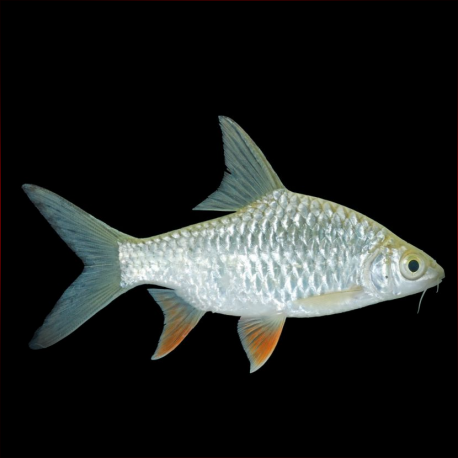More info
Datasheet
| Minimum Tank Size | 860 litres / 227.19 US gallons |
| Maximum Size | 35.0cm / 13.78inches |
| Temperature | 20°C / 68.00°F - 26°C / 78.80°F |
| Hardness | 2.02dgH / 36ppm - 15.02dgH / 268ppm |
| pH | 6.0-8.0 |
General Description
Hypsibarbus lagleri, a species within the Cyprinidae family, is characterized by its distinctive features, including a compressed body, serrated dorsal-fin spine, and brightly colored anal and pelvic fins with extended falcate tips. These fish are highly valued for food but face a declining population due to factors like river damming and agriculture.
Aquarium Setup
For maintaining Hypsibarbus species in captivity, it is advised to have a tank size of at least 860 liters (see table). while the decor is not critical, clean water and ample swimming space are essential. Creating a setup that mimics a flowing river with varied rocks, gravel, boulders, and driftwood will suit their natural habitat requirements. These fish thrive in pristine water conditions with high oxygen levels.
Behaviour
Despite not being inherently aggressive, Hypsibarbus lagleri can prey on small fish and disturb slow-moving tank mates due to their active and vigorous feeding behavior. They prefer schooling, so keeping them in groups of six or more is recommended for their well-being.
Feeding and Diet
In their natural habitat, Hypsibarbus species feed on zooplankton, worms, and algae, displaying opportunistic foraging behavior. In captive settings, they readily accept varied diets consisting of live and frozen foods like bloodworms, Daphnia, Artemia, along with quality dried flakes, granules, and vegetable matter.
Reproduction & Dimorphism
There is limited information on the reproductive behavior of Hypsibarbus lagleri. Sexually mature females tend to have a deeper body shape and may grow larger than males, exhibiting sexual dimorphism.
Habitat and Distribution
Endemic to the middle Mekong basin in Laos, eastern Thailand, and Cambodia, including various tributary systems, H. lagleri prefers rocky habitats with flowing water. They exhibit migratory behavior, moving between larger river channels in dry seasons and smaller tributaries during wetter months, showing a preference for natural habitats over artificial impoundments.

